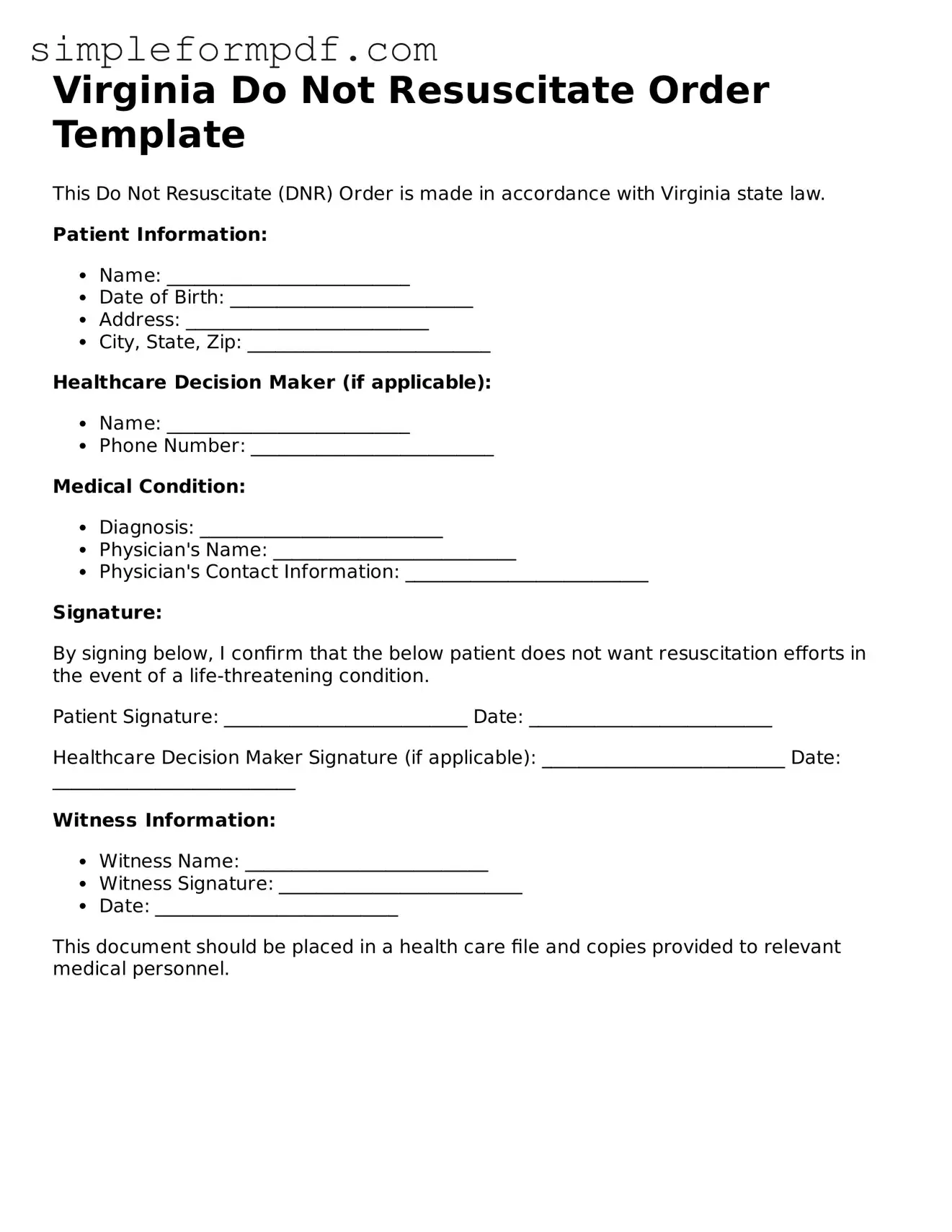Free Do Not Resuscitate Order Form for the State of Virginia
A Virginia Do Not Resuscitate Order (DNR) form is a legal document that allows individuals to express their wishes regarding resuscitation efforts in the event of a medical emergency. This form ensures that healthcare providers respect a person's desire to forgo life-saving measures. Understanding and completing this form is essential for anyone wishing to make their healthcare preferences clear.
To take control of your healthcare decisions, fill out the Virginia DNR form by clicking the button below.
Launch Editor
